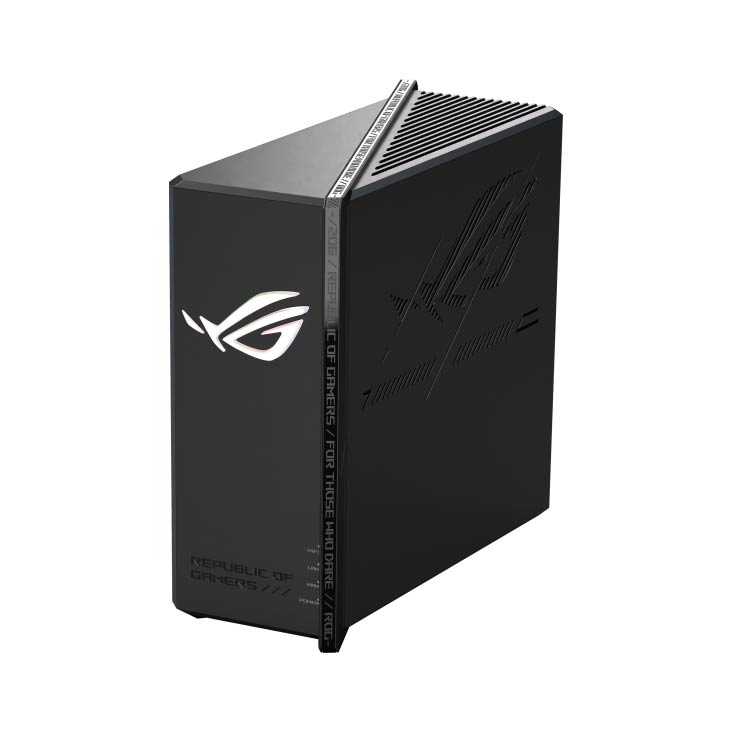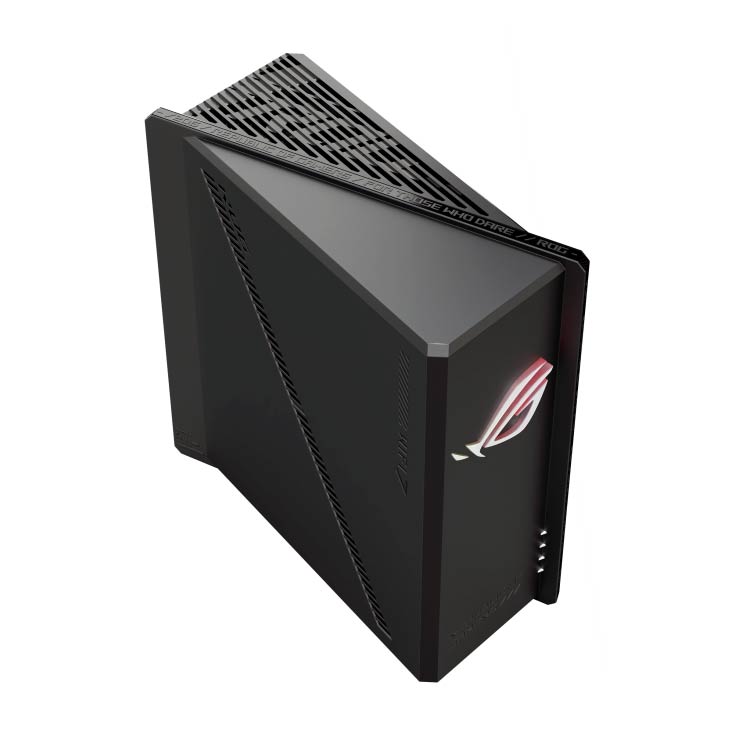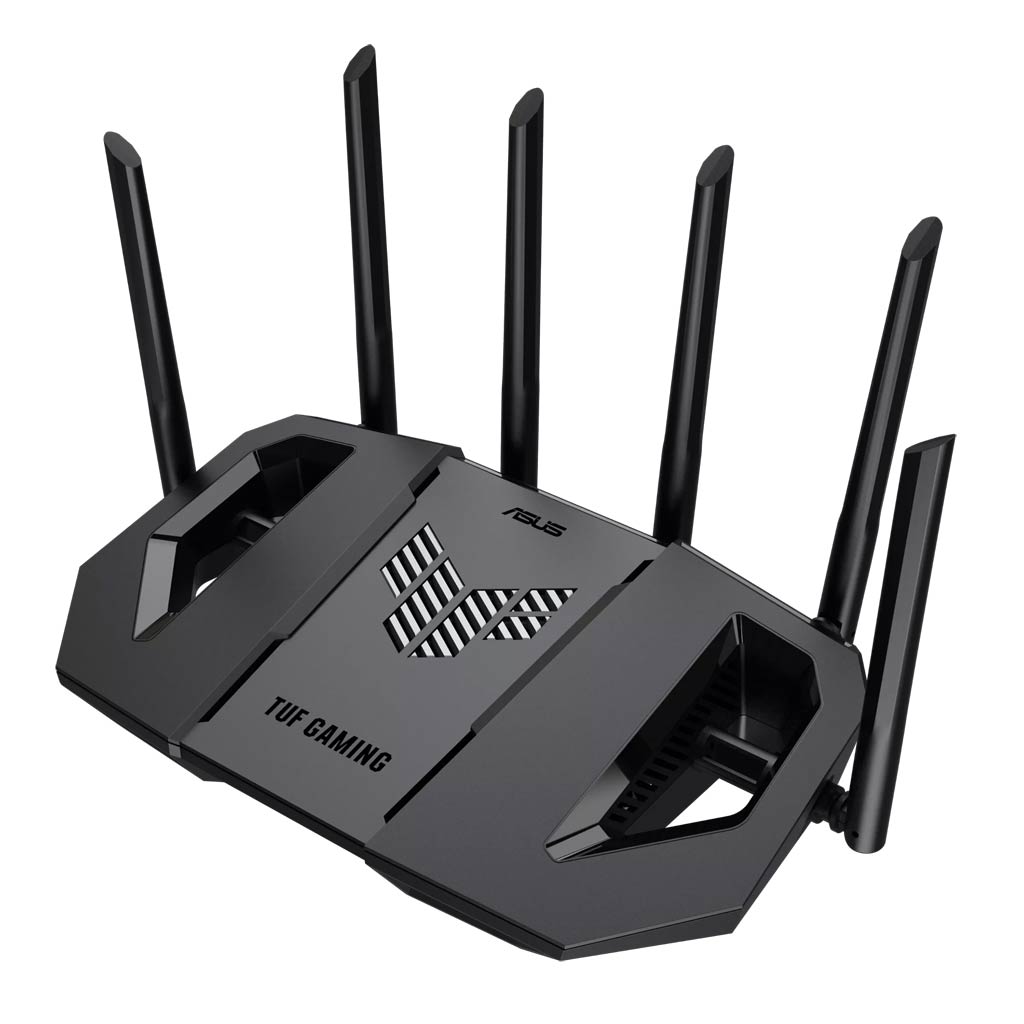If you are looking for a gaming router with lots of network ports, ASUS has something you might want to look forward to. Today, hardware vendors announced two new gaming routers in their ROG Strix and TUF families: the ROG STRIX GS-BE18000 and the TUF-BE9400. Both have entry-level multi-Gigabit for wired clients with plenty of 2.5Gbps ports, eight and four, respectively.
Update: Reviews are now available: GS-BE18000 | TUF-BE9400.

ASUS ROG STRIX GS-BE18000: A new hardware design
The ROG STRIX GS-BE18000 is an entirely new router coming in a somewhat square box with internal antennas. In fact, it looks more like a compact computer than a Wi-Fi router and has similar processing power with a 2.0 GHz tri-core CPU and 2GB of DDR4 RAM.
ASUS says the new router features two advanced Wi-Fi chipsets, one for the 2.4GHz and 5GHz bands and the other exclusively for the 6GHz band. These chips come with EMI shielding to work with high-power front-end modules (FEMs) and eight internal antennas to offer the best possible performance. Specifically, the router will feature AFC on for its 6GHz band, which is a big bonus for those who want the best coverage on this frequency.
What’s also notable is that on the back, it comes with eight 2.5Gbps ports arranged in two arrays. One of them works as the WAN, and the rest as LANs. Two of the LAN ports are dedicated game ports by default.
Other than the lack of 10Gbps ports, the ROG STRIX GS-BE18000 has everything to be a top-tier gaming router.


ASUS TUF-BE9400: A mid-tier gaming router
The TUF-BE9400, on the other hand, is a mid-tier Wi-Fi machine all the way. It comes with four 2.5Gbps ports (one WAN and three LANs) and 2×2 Wi-Fi specs with 9400Mbps of combined Wi-Fi bandwidth.
This is a standard router with six external antennas attached to its body and all the ports on the back. It features MLO but not AFC.
The details of both the GS-BE18000 and TUF-BE9400 gaming routers are still sketchy, but the table below shows what’s currently known about both.
ASUS GS-BE18000 vs. TUF-BE9400: Hardware specifications
| ASUS ROG ROG STRIX GS-BE18000 Wi-Fi 7 Gaming Router | ASUS TUF-BE9400 Gaming BE9400 Tri-Band WiFi 7 Gaming Router | |
|---|---|---|
 |  | |
| Model | GS-BE18000 | TUF-BE9400 |
| Antennas | 8 x Internal | 6 x external |
| Wi-Fi Bandwidth | Tri-band BE18000 | Tri-band BE9400 |
| Modulation Scheme (QAM) | 4096-QAM (all bands) | |
| 2.4GHz Band (channel width) | 2×2 BE: Up to 688Mbps | |
| 5GHz Band (channel width) | 4×4 BE: Up to 5762Mbps (20/40/80/160MHz) | 2×2 BE: Up to 2880 Mbps (20/40/80/240MHz) |
| 6GHz Band (channel width) | 4×4 BE: up to 11,525Mbps (20/40/80/160/320MHz) (all channels) | 2×2 BE: Up to 5760Mbps (20/40/80/160/320MHz) |
| Multi-Link Operation (MLO) | Yes | |
| Automated Frequency Coordination (AFC) | Yes | No |
| Network Standards | IEEE 802.11a, IEEE 802.11b, IEEE 802.11g, IEEE 802.11n, IEEE 802.11ac, IEEE 802.11ax, IEEE 802.11be, IPv4, IPv6 | |
| Network Features | Web User Interface ASUS Mobile App ASUS Core Features | |
| Gaming Features | ASUS Gaming Features | |
| Mesh-Ready | Yes (AiMesh) | |
| Processing Power | 2GHz CPU, 256MB Flash, 2GB DDR4 RAM | TBD |
| Multi-Gig Port | 1x 2.5GBASE-T WAN, 7x 2.5GBASE-T LAN | 1x 2.5GBASE-T WAN, 3x 2.5GBASE-T LAN |
| Gigabit Port | None | |
| USB Port | 1 x USB 3.0 | |
| Hardware Buttons | WPS Button, Reset Button, Power Button | |
| Dimensions | 8.86 x 3.54 x 8.86 in (225 x 90 x 225 mm) | TBD |
| Weight | 2.04 lbs (927.5 g) | TBD |
| Release Date | TBD | |
| DC Power Adapter | 100~240 V | |
| Firmware | ASUSWRT | |
| Power Consumption (per 24 hours) | TBD | |
| US Launch Price | TBD | |


Availability and pricing
ASUS is tight-lipped about the availability of both routers for now. It’s safe to say, though, that they will likely be available by the end of the year. As the model suggests, they are likely to be available in the Asia and EU regions first, before making it to the US. I’ll update this post when I learn more.
Update: Reviews are now available: GS-BE18000 | TUF-BE9400.



I see the GS-BE18000 on the Best Buy website for $450. It says there is only one at each store. I don’t know if it’s legit. I haven’t gone to check it out.
I’m not sure but I wouldn’t be surprised if they have a model made exclusively for that retailer.
The Asus TUF-BE6500 router is available to buy in Costco for $199.
Yeap, it’s a different variant, though.
Yes, but Asus doesn’t have anything listed for the other TUF-BE variants other than overview.
Big miss to not include 10gb ports these days. I’m waiting for the full review of the GT-BE19000AI router, that one is by far the most interesting one out this year!
I second that, Peter.
I’m still running an AX-88U and always thinking about an upgrade (I don’t know why LOL). What do you think the range of the internal antennas will be compared to external?
I’d say it’d make a little difference, if at all, in your case, Aaron. More here.
Thanks for the early post on the GS-BE18000! I was curious about the antenna placements and found more information on a non-USA ASUS page. There are 8 internal – 6 at various angles and two on the mainboard. This makes it a good choice for my more compact closet. And with a 2.5GHz Ethernet backhaul for AiMesh it’ll cover all installed clients. Now, if it’d only have PoE.
Interesting that they would come out with a ROG unit that is less than the BQ16 Pro. Why?
ROG Trix and TUF are a more affordable subbrands of ROG, Aaron. It was first made for the Asian and Centra American markets.
Dong.
Usually…there would be gnashing of teeth as yet another “newbie” is shown to the world. But.. not today. My new Asus RT BE-88U has now been running for a week and I am delighted with it. With it’s plethora of ports and very decent quad core processor. I know… no 6GHZ band, but who cares.?Your excellent review of the 88U was instrumental in me buying it and that is one step I will never regret.
Dong… THANK YOU for being in the forefront of all that happens out there and sharing it with us. I am most grateful to you.
Albert.
Glad it worked out, Albert. And you’re welcome!
Wow, that GS-BE18000 looks like a desktop computer of yesteryears.
I don’t know Dong, that thing will probably be close to $1,000 and if I have to return it after 30 days of incompatibility like I had with the GT-BE98 PRO, no thanks!
Know what I’m saying?😉
Thank you for your review.
I think it’s smaller than it looks, Panos. But you’re right, it’s more like a computer than a router. And, don’t quote me, but it likely costs less than than the GT-BE98 Pro.